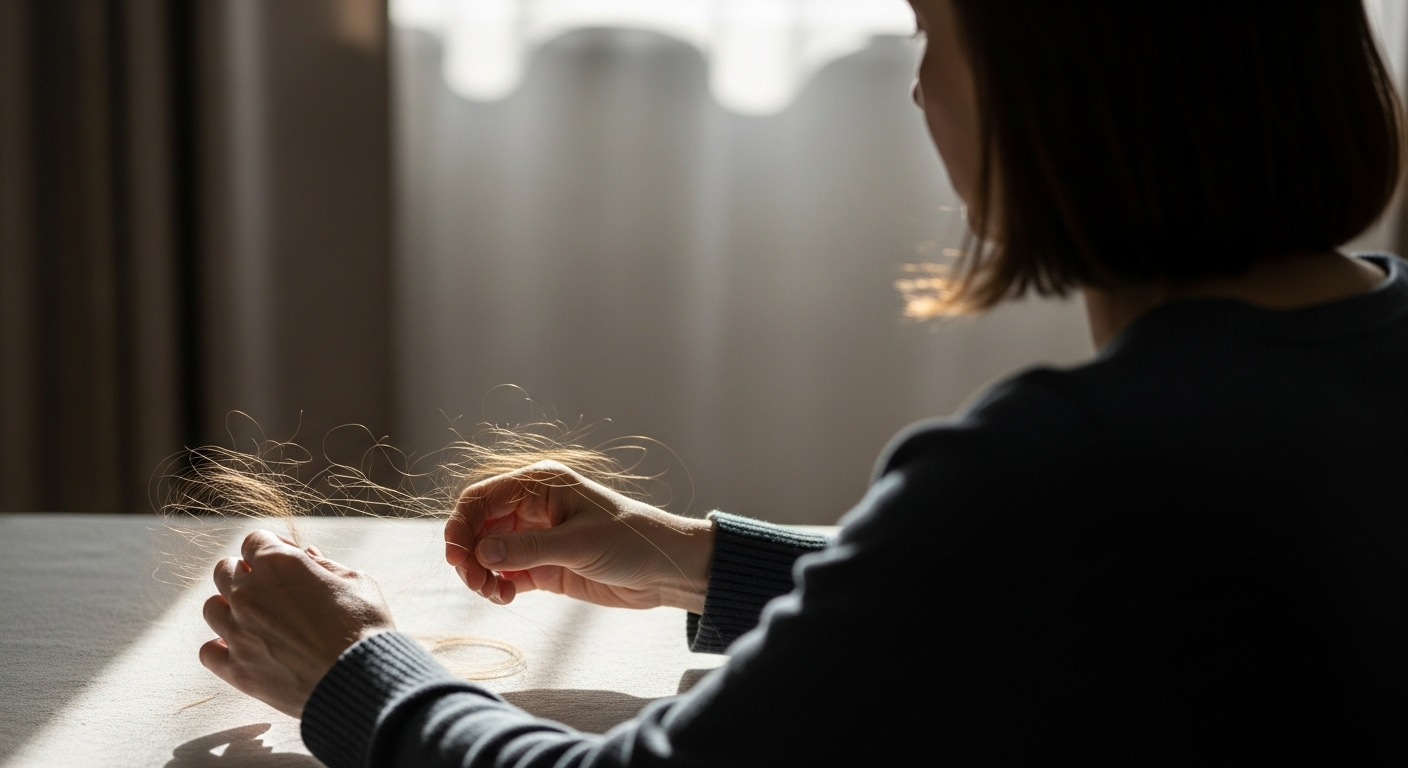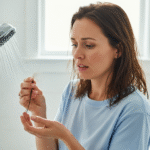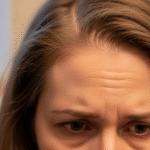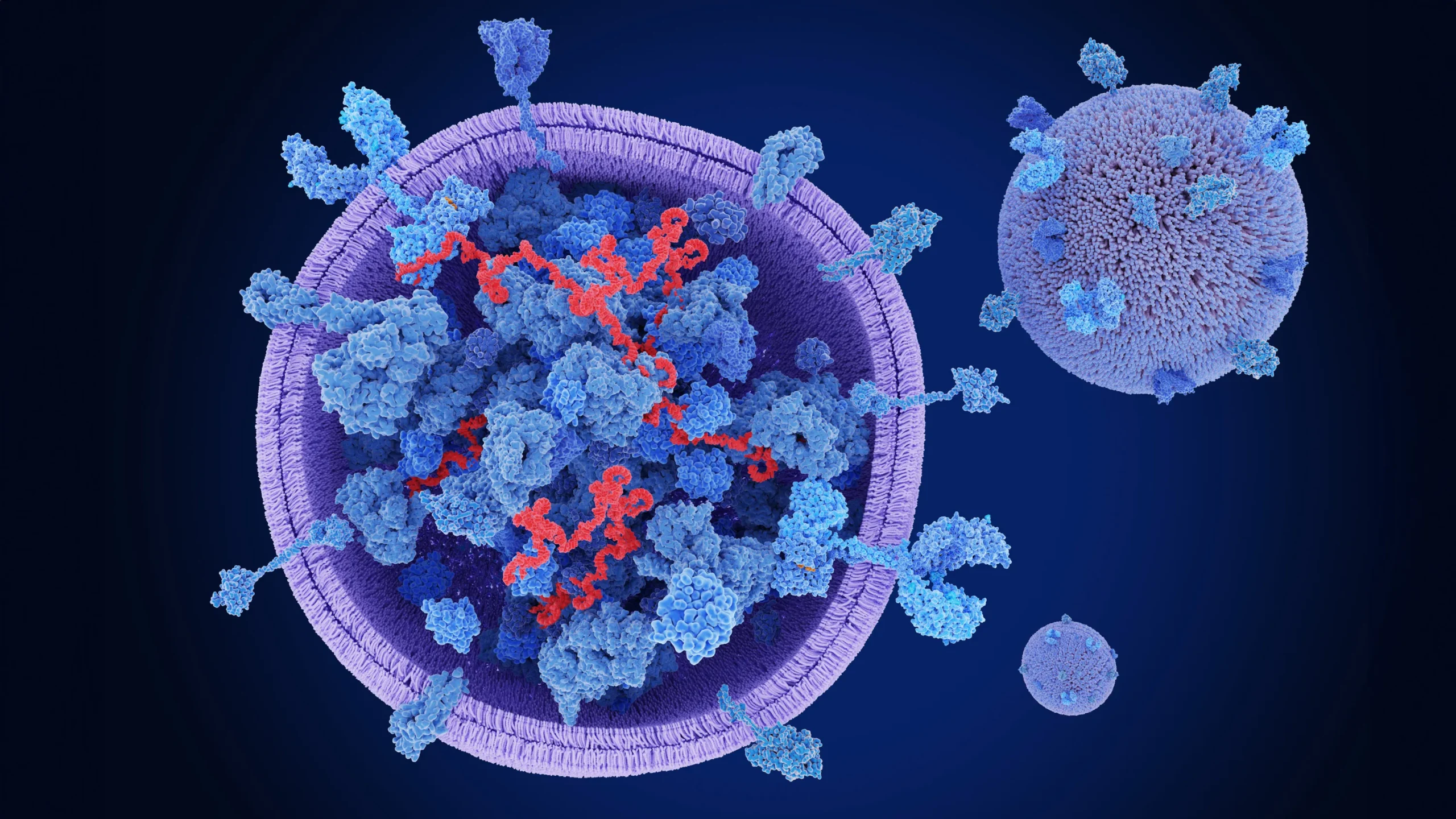If you’ve noticed more hair breakage or thinning on the side you sleep on, you might be wondering, Can Sleeping on One Side Cause Hair Loss? While it’s a common concern, the good news is that side-sleeping doesn’t directly cause permanent hair loss. However, friction, pressure, and poor hair care habits can contribute to hair …
If you’ve noticed more hair breakage or thinning on the side you sleep on, you might be wondering, Can Sleeping on One Side Cause Hair Loss? While it’s a common concern, the good news is that side-sleeping doesn’t directly cause permanent hair loss.
However, friction, pressure, and poor hair care habits can contribute to hair breakage and thinning. In this article, we’ll explore how side-sleeping may affect your hair, offer practical tips to protect it, and explain when to seek professional advice.
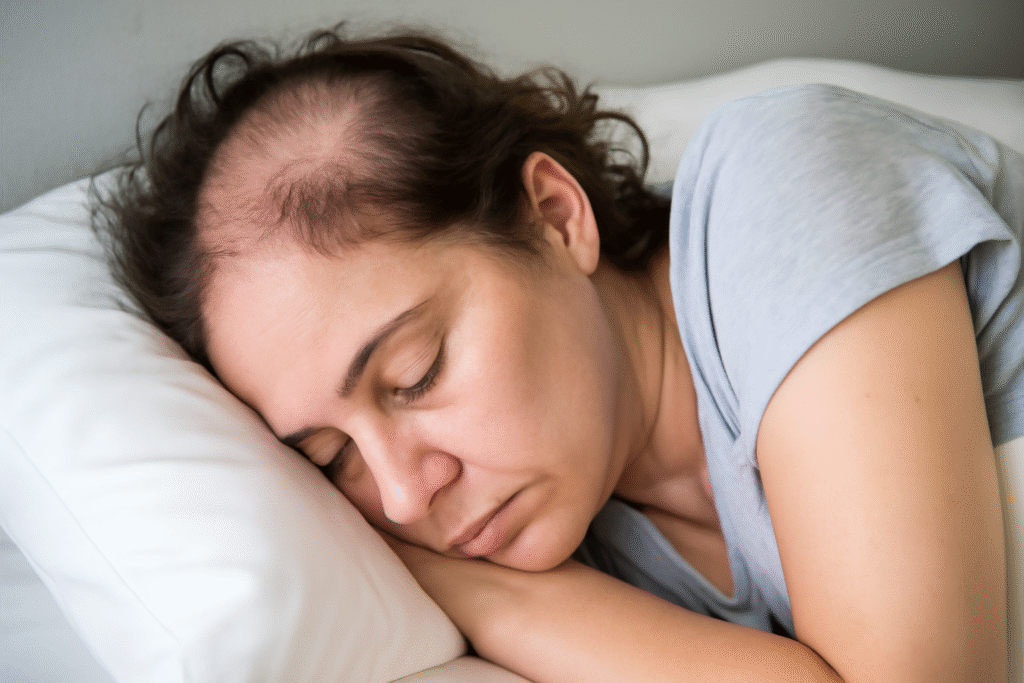
Does Sleeping on One Side Cause Hair Loss?
The simple answer is no—sleeping on one side doesn’t directly cause hair loss. However, it can lead to hair damage over time. Hair loss typically occurs due to factors like genetics, stress, and medical conditions, but sleeping habits, including sleeping on one side, can cause temporary issues like hair breakage or thinning. Here’s how:
- Friction and Hair Breakage: When you sleep on your side, your hair comes in contact with the pillow, creating friction. Over time, this repeated friction can cause hair strands to break, especially if your hair is already fragile or dry. This is particularly true for individuals with longer hair or those who use rough pillowcases.
- Pressure on Hair Follicles: Pressure from sleeping in one position can cause temporary hair thinning due to the constant compression of hair follicles. This is known as pressure alopecia and is usually reversible once the pressure is alleviated. However, prolonged pressure may contribute to more noticeable thinning in localized areas.
- Scalp Health: The position of your head can affect the circulation to your scalp. Poor circulation due to sleeping on one side might impact hair follicle health, making hair growth slower or weaker in the long term.
How Side-Sleeping Can Affect Hair Health
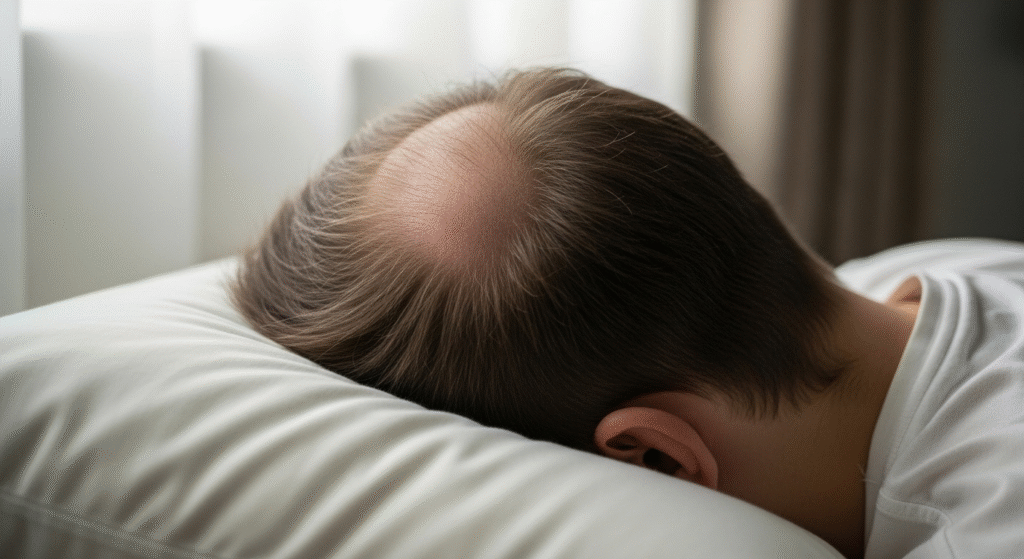
Side-sleeping, if done consistently on one side, can lead to several hair-related issues:
- Frictional Alopecia: This condition arises when continuous rubbing against the pillow causes hair to weaken and break. While it doesn’t lead to baldness, it can cause hair thinning over time, particularly for those who sleep on their sides every night.
- Pressure Alopecia: Pressure alopecia occurs when sustained pressure is applied to specific parts of the scalp. Side-sleeping might lead to temporary thinning along the areas of the scalp that touch the pillow, especially in those with fine or thinning hair.
- Traction Effects: If you sleep with your hair in tight braids, buns, or ponytails, the continuous pressure on your hair follicles can contribute to traction alopecia. While this isn’t directly related to sleeping on one side, tight hairstyles during sleep can exacerbate the issue.
Who Is Most at Risk?
Not everyone is equally at risk of experiencing hair thinning or breakage from side-sleeping. Some individuals are more likely to experience these issues due to the following factors:
- Hair Type: People with fine, brittle, or chemically treated hair are more susceptible to breakage caused by friction during sleep.
- Hair Length: Longer hair can be more prone to friction and tangling, which increases the risk of breakage when sleeping on one side.
- Existing Hair Conditions: Individuals with pre-existing conditions like traction alopecia, scalp irritation, or other dermatological issues may experience aggravated symptoms from pressure or friction during sleep.
- Sleeping Habits: People who consistently sleep on one side or in a way that places excess pressure on their hair follicles are more likely to experience localized hair thinning.
Prevention and Protection Tips
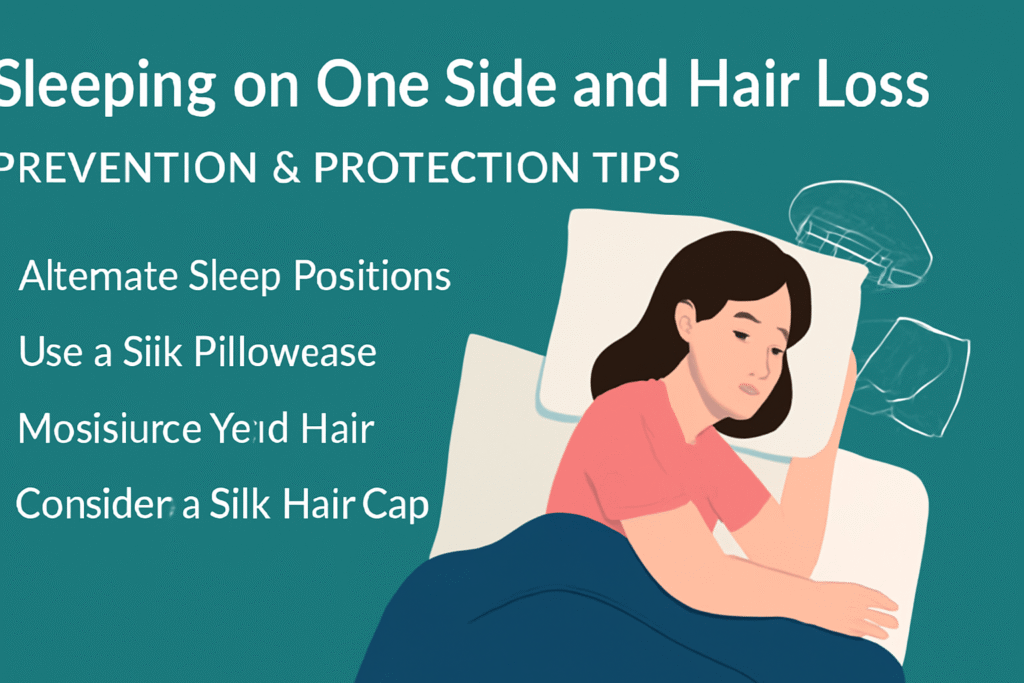
While side-sleeping alone won’t necessarily lead to permanent hair loss, there are a few protective steps you can take to prevent breakage and thinning:
- Alternate Sleep Positions: Try to change sides or sleep on your back to avoid applying pressure to the same side of your head each night. This simple habit can help distribute the pressure more evenly across your scalp.
- Choose the Right Pillowcase: Switch to a silk or satin pillowcase. These materials cause less friction than cotton pillowcases, reducing hair breakage. They also help your hair retain moisture, preventing it from becoming dry and brittle.
- Gentle Nighttime Hair Care: Before bed, gently detangle your hair with a wide-tooth comb to prevent knots and breakage. Avoid tight hairstyles such as ponytails or braids that pull on your hair follicles, as these can lead to traction alopecia.
- Hydrate and Moisturize: Use a leave-in conditioner or overnight hair mask to hydrate your hair and reduce dryness. Well-moisturized hair is more resilient to friction and breakage.
- Cover Your Hair: Consider using a silk hair cap or scarf while sleeping to minimize friction and keep hair in place. This will help protect your strands while preventing them from getting tangled or damaged.
When to Consult a Specialist
If you notice that your hair thinning becomes more pronounced or persistent, it may be time to consult a specialist:
- Persistent Hair Shedding: If hair thinning continues despite implementing protective measures, it could indicate a more significant issue, such as a scalp condition or underlying hair disorder.
- Scalp Irritation: If you experience irritation, redness, or inflammation on your scalp, it’s important to seek medical advice. These could be signs of a more serious scalp condition like dermatitis or folliculitis.
- Significant Bald Spots: If localized hair thinning turns into bald spots or recedes significantly, a trichologist or dermatologist can assess whether this is due to sleeping habits or another cause.
FAQs
Does side-sleeping cause permanent hair loss?
No, side-sleeping can cause temporary breakage or thinning, but it doesn’t directly cause permanent hair loss.
Can I prevent hair breakage from side-sleeping?
Yes, using silk pillowcases, alternating sleep positions, and moisturizing your hair can prevent hair breakage caused by side-sleeping.
Is traction alopecia caused by sleeping positions?
Traction alopecia is typically caused by tight hairstyles rather than sleeping positions. However, pressure from sleeping in the same position can contribute to scalp issues.
What is the best pillowcase for preventing hair damage?
Silk or satin pillowcases are best for preventing hair breakage and minimizing friction.
When should I see a doctor about hair loss?
If hair thinning continues or worsens, or if you notice scalp irritation or bald spots, it’s time to consult a specialist.
Conclusion
Sleeping on one side may not directly cause permanent hair loss, but it can contribute to temporary breakage and thinning, especially if friction and pressure are involved.
By taking preventive measures such as alternating sleep positions, using silk pillowcases, and moisturizing your hair, you can protect your hair from damage.
If you experience persistent hair issues, it’s always a good idea to consult with Dr. Uzma Irfan, an ISHRS-certified surgeon in Islamabad today, to ensure the health of your hair and scalp.

